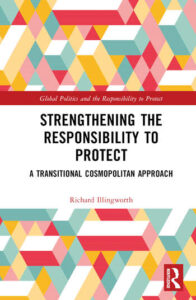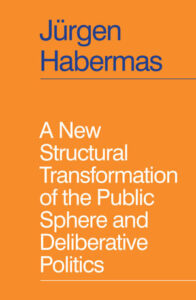

Royal Fraud: The Story of Albania’s First and Last King
By Robert C. Austin
Publisher: Central European University Press
Recommended by Edina Paleviq
Royal Fraud: The Story of Albania’s First and Last King, by Robert C. Austin, delves into the intriguing life of King Zog I, a figure often relegated to the periphery of historical narratives. As Zog has been referred to as “the bizarre King Zog” and ”the last ruler of romance,” his reign over Albania during the tumultuous twentieth century presents a story both fascinating and full of sorrow. Austin adeptly unfolds the complexities of Zog’s rise to power and his controversial rule amidst a Europe grappling with political upheaval. From his audacious ascent to his becoming Europe’s youngest president to his eventual coronation as Albania’s monarch in 1928, Zog’s journey is punctuated with political intrigue, internal conflicts, and acts of violence—a story line all too common in the volatile Balkan region.
Although Zog had a grandiose title, his reign was marred by accusations of fraud; and the populace was largely indifferent to his governance. Austin vividly portrays a leader who maintained authority through manipulation and force, yet failed to significantly uplift his nation, ultimately leaving it mired in poverty and stagnation. Interwoven with Zog’s story is Austin’s incisive examination of Albania’s political landscape, which provides readers with a deeper insight into the nation’s evolution from Ottoman dominion to the brink of Euro-Atlantic integration. Royal Fraud transcends the confines of a traditional biography, emerging as a captivating exploration of power dynamics, ambition, and the intricate challenges of governance within a region steeped in historical tensions. Through meticulous research and compelling narrating, Austin illuminates a neglected chapter of history, rendering this book indispensable for those seeking a nuanced understanding of Europe’s complex tapestry. In essence, Royal Fraud not only resurrects the legacy of a forgotten monarch but also offers a poignant reflection on the multifaceted nature of leadership and the enduring impact of historical legacies. Austin’s thorough attention to detail and engaging prose makes this book an essential reading for anyone interested in unraveling the intricacies of Europe’s past.

Strengthening the Responsibility to Protect: A Transitional Cosmopolitan Approach
By Richard Illingworth
Publisher: Routledge
Recommended by Aslihan Turan
Adopted in 2005 at the UN World Summit to prevent and stop mass atrocity crimes, the Responsibility to Protect (R2P) report has transformed the debate on state immunity and the protection of civilian rights during conflicts. In his latest book, Richard Illingworth highlights different approaches to the R2P through a cosmopolitan reading. According to him, the R2P doctrine, whether supported or criticized, deserves to be on the international agenda, at the philosophical and practical levels, because of the moral ideal that this responsibility entails. In particular, the author elaborates on the challenges that the R2P meets in the face of the increasing number of atrocity crimes around the world, the weakening of the liberal world order, and the UN Security Council’s competencies over the application of the R2P and veto power over it. Illingworth uses cosmopolitanism to establish criteria that should strengthen the R2P and to show that a normative lens is necessary for the R2P to answer demands on the ground. The book posits that the concepts of moral equality and equal worth of individuals are fundamental components of a moral ideal that engenders the ultimate responsibility of states to prevent and react to mass atrocity crimes.
While the R2P has drawn scholarly attention as a promising doctrine, it has not resonated at the practical level. Due to its internal contradictions and the context of its adoption, the R2P has not successfully functioned as a normative or moral guide. Governments have referred to and applied the R2P inconsistently, transforming it into a mere symbolic document. Illingworth’s merit is in bringing the R2P into the agenda of the discipline of international relations and inviting a deepening of the doctrine. As the only guiding text on the prevention of atrocity crimes, the R2P report is important for both scholars and politicians. The volume proposes new tools to strengthen the R2P and calls for the action of the UN General Assembly. As the number of humanitarian tragedies in the world has increased, Illingworth succeeds in reviving the R2P as a pertinent concept and doctrine.
 A New Structural Transformation of the Public Sphere and Deliberative Politics
A New Structural Transformation of the Public Sphere and Deliberative Politics
By Jürgen Habermas (translated by Ciaran Cronin)
Publisher: Polity Press
Recommended by Nicholas Ostrum
A New Structural Transformation of the Public Sphere and Deliberative Politics is Jürgen Habermas’s latest addendum to his seminal 1962 study on The Structural Transformation of the Public Sphere (first published in English in 1989). A translation of the 2022 German version, half of A New Structural Transformation consists of a chapter modified from an article previously published in Theory, Culture & Society, and the other half of an interview and brief essay expounding on Habermas’ conceptualization of deliberative democracy. The ”new structural transformation” Habermas speaks of concerns the digital world of social media and related shift of news outlets from gatekeepers and arbiters of a shared informational space to content generators, which functionally reinforce partisan divisions. Per Habermas, “the digitalization of public communication is blurring the perception of (the) boundary between the private and public spheres of life, although the social-structural prerequisites for this distinction…have not changed.” (21) In other words, technology is outpacing regulation and eroding the public sphere. In turn, the latter is fracturing into a series of mutually exclusive and exclusionary bubbles. The issue is that participants in these bubbles no longer engage in the larger public sphere with an intention to deliberate—what Habermas calls “the expectation that the parties should examine their initial preferences in the course of deliberation but also change them in light of better reasons” (65)—but gravitate toward “self-referential reciprocal confirmation” of their presuppositions. (51)
Naturally, this fragmentation of the public sphere is not just a function of colonization by capitalist incentives (read: the ubiquity of fluff-pieces, click-bait, and ads disguised as articles, and actual fake news) and neoliberal ideologies. It also results from a movement of a large faction of postindustrial populations away from the foundational principles of a healthy public sphere, wherein participants entered the debate with a “willingness to learn” from others, accepted the resulting public opinion outcomes as legitimate, and trusted that such outcomes could be contested fairly in the future. Without this common understanding of goals and process, democratic deliberation cannot take place. The New Structural Transformation is much shorter than its predecessor and much more easily digestible. It is also current. Although Habermas focuses on broader structural trends in the abstract, he intermittently comments on the real-world evidence of these changes, especially the COVID-19 pandemic, the transatlantic rise of the radical right, and related disinformation campaigns. That presentism, as well as Habermas’s correctives in response to those critiquing his theories on the public sphere, make this book an especially worthwhile read.
Published on April 15, 2024.




